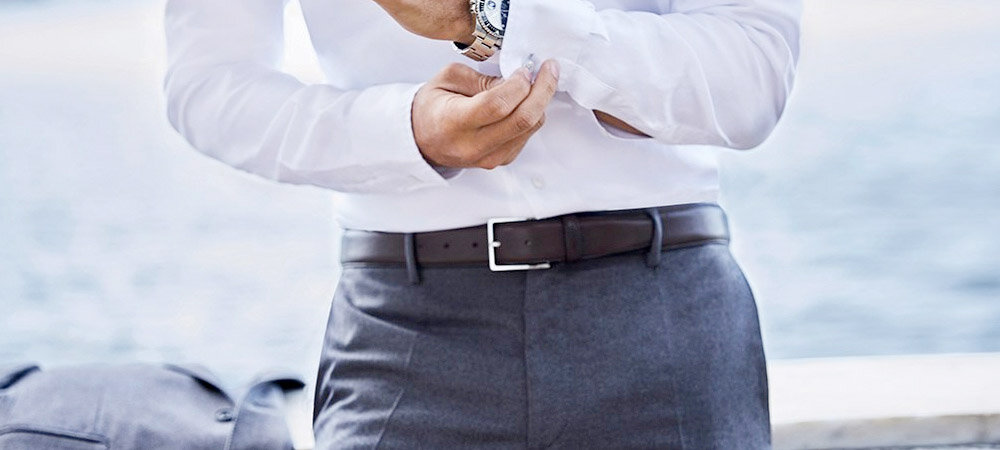Men's belts guide
Men's Belts Guide
The humble belt. A simple strip of leather can be used to tie a look together or punctuate it adding colour and depth. That’s what makes a good selection of belts a must for any gent. Belts are one of those rare items of menswear that you don’t have to spend a fortune on to get high quality and they are a prime example of the idea that the smallest details often make the biggest difference.
A belt has the ability to whisper quietly about your assured sense of style. On the other hand, a mismatched belt will draw the eye for all the wrong reasons.
Formal and casual settings demand different styles and with each comes a variety of materials and colours.
Material
There are three key materials to consider when selecting a belt: leather, suede and woven. All can be worn in casual settings, but only leather should be worn formally. If formal is your end goal opt for a slightly thinner style (around an inch in width) with minimal detailing and a classic metal buckle.
Sizing
Belts are traditionally sold in sizes that correspond to waist measurements (e.g. 32″-34″). The first measurement is from the start of the buckle to the closest hole (the tightest the belt can be fastened), while the second runs to the middle hole.
When it comes to width keep between an inch to an inch and a half, which will ensure your belt is not so skinny that it won’t fill your trouser loops but doesn’t look too wide.
Buckle
Along with the material and width, the buckle of a belt determines how dressy or casual it is. Square brass buckles are the most common for classic leather belts, while D-rings are popular on casual belts for the summer.
Colour
Belt colours don’t stop at black or brown. For leather there are the two classics all men should own but the options are endless. A bold woven belt can be a good way to add a dash of personality to an otherwise subdued outfit and also has the potential to become a feature of your signature style.
Look At Your Feet
When choosing a belt match the colour and finish (matte, patent, suede) to shoes you are wearing a lot.
Match Your Metals
While silver, gold and brass tones are all acceptable finishes for a belt buckle, try to pick a material that matches any other metal you’re wearing, such as a watch or cufflinks.
Key Belt Styles
Formal
When it comes to finding the right belt to match your tailoring, width and material are the most important factors. A formal belt will be leather and slightly thinner than a casual one. Colour really depends on the shade of the suit and what other leathers you’re wearing. A chestnut belt and shoes with a navy suit, for example, is a timeless combination that always looks good. If in doubt, though, it’s impossible to go wrong with a black belt and matching shoes.
Casual Leather & Suede
For a smart casual dress code or just basic day-to-day duties a casual leather or suede belt is the go-to option. These tend to be slightly wider than their formal counterparts and buckles can be more elaborate.
Woven
Woven belts offer a way to introduce some texture into any outfit and they are comfortable. The webbed construction provides increased flex and stretch allowing for the natural variations in waist circumference. Stick to wearing it with chinos, jeans and shorts and you won’t ever put a foot wrong.
The Dos And Don’ts Of Buying A Belt
Don’t choose a loud colour or tonal designs if you’re looking for versatility.
Do measure your waist size to make buying belts online easy.
Do pick a belt with a finish or weave that matches the rest of your accessories.
Don’t stick to one belt colour for all occasions. Have a brown, black and tan option to cover most eventualities and dress codes.
Do match the metal of your belt’s buckle with your watch and cufflinks.








